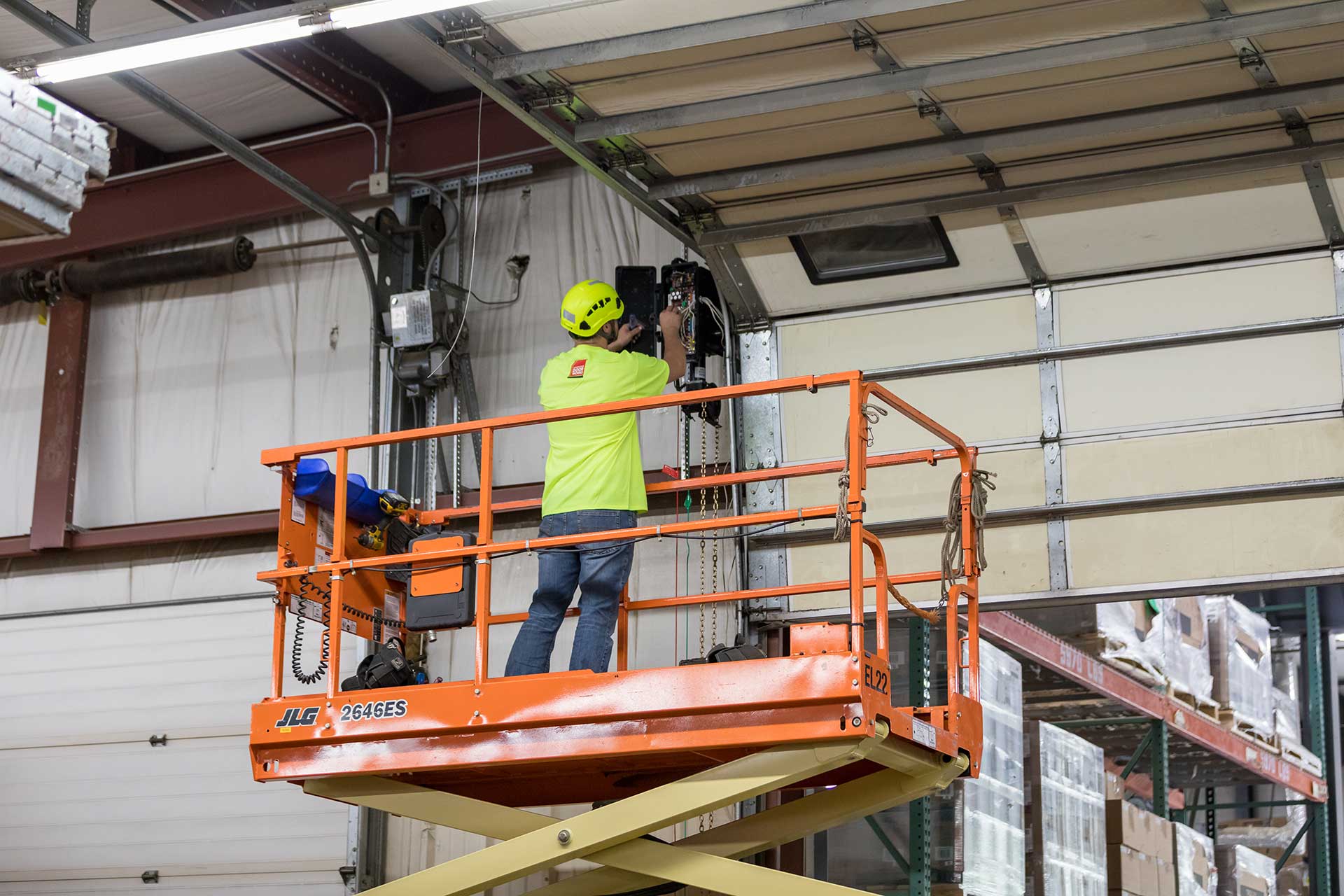From cables to gears and everything in-between, the moving parts of your garage door all have a place and a purpose. Not sure what you can tackle on your own or call the expert for? We’ve got you covered with the five repairs that you should pick up the phone to schedule a residential garage door repair for.
1. Spring Replacement
Did you know garage door springs are rated by cycles? A cycle is defined by how many times a garage door goes up and down. The expected life of a spring is about 10,000 cycles, which can range from 5-10 years. This estimate is based on a homeowner who leaves in the morning (opening and closing the door) and returns home (opening and closing the door). Over time, the springs simply wear out and will eventually snap. And, you’ll hear it when it does. The door may go up part ways and then go back down. The garage door opener is the only thing trying to lift the very heavy door.
There is a lot of built up energy in a torsion spring; inexperienced handling carries great risk of damage and injury. In addition to safety reasons, incorrect tension of springs can cause more stress and/or damage on your door. Trusting the hands of a skilled service technician will ensure you are taking the correct measures to replace the spring properly.
2. Section Replacement
Believe it or not, most cases of section replacements are self- or weather-inflicted damage. Some of the most common examples are backing into the garage door, hail damage, rust from weathering, dents (a ball hitting the door), etc. Accidents happen!
It’s best to leave this residential garage door repair to an expert. The springs are under very tight tension, the sections can be heavy due to the type of insulation used and it can be tricking to unhang a door from a ladder. One wrong move when it comes to section replacement and you could be looking at serious injuries. It’s never a risk worth taking.
3. Cable Replacement
Simply put: wear and tear. Over time, the individual strands of the cable wire can start to fray out. Usually when this happens, one cable will stretch and your door may go up or down a little bit crooked. Or, they may snap – which is also very common.
Manipulation of the garage door springs is needed in order for a cable to be properly replaced. It’s highly recommended this repair is completed by an experienced garage door service tech.
4. Gear Kits Replacement on the Opener
Weather, especially our Minnesota winters, is tough on residential garage doors and openers. When it is cold, everything runs a little more rough, putting stress on the gears. The additional stress can cause the gears to wear down and start to “spin”. This means you will hear the garage door opener running but nothing will be moving, a sure sign that your gears have gone out. Another thing that may cause gear kits to wear out is, if the springs are broken, you continue to open and close the door. Some doors are light enough to continue operating this way, but this causes a lot of stress on the gear.
If gear kits aren’t replaced properly, the entire opener could be damaged, turning an inexpensive repair into a new opener. Save those residential garage door repair dollars by assigning this to an experienced professional.
5. Circuit Board Replacement on the Opener
In most cases, a power surge (i.e. a lightning strike) causes this issue. It’s customarily an electrical related surge in the home. Unfortunately, it’s one of those instances that can’t be prevented. One small gadget that will help with this is a power surge protector.
Installing a new circuit board requires acute detail. This too, if not done properly, could turn an inexpensive part into a new opener. Just another reason to call a residential garage door expert.
If any one of these parts of your garage door system aren’t functioning properly, it’s best to seek professional help. You’ll save money and ensure the longevity of your garage door.


